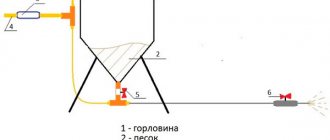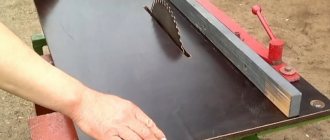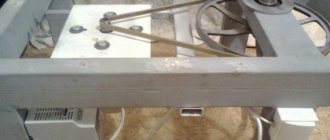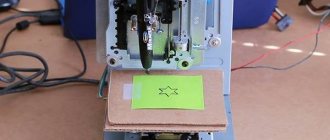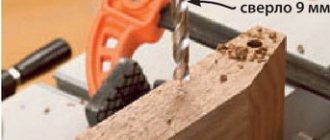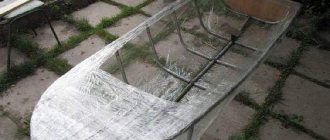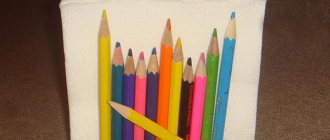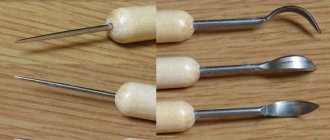01/26/201701/26/2017 master
LED light sources are by far the most popular among consumers. LED lights are especially popular. There are different ways to get an LED flashlight: you can buy it in a store or make it yourself.
LED handheld flashlight
Many people who understand at least a little electronics, for various reasons, increasingly prefer to make such lighting devices with their own hands. Therefore, this article will discuss several options for how you can make your own diode hand-held flashlight.
Advantages of LED lamps
Today, LED is considered one of the most profitable efficient light sources. It is capable of creating a bright luminous flux at low powers, and also has a lot of other positive technical characteristics. It’s worth making your own flashlight from diodes for the following reasons:
- individual LEDs are not expensive;
- all aspects of assembly can be easily accomplished with your own hands;
- a homemade lighting device can run on batteries (two or one);
Note! Due to the low power consumption of LEDs during operation, there are many schemes where only one battery powers the device. If necessary, it can be replaced with a battery of appropriate dimensions.
- availability of simple diagrams for assembly.
LEDs and their glow
In addition, the resulting lamp will last much longer than its analogues. In this case, you can choose any color of the glow (white, yellow, green, etc.). Naturally, the most relevant colors here will be yellow and white. But, if you need to make special lighting for some celebration, then you can use LEDs with a more extravagant glow color.
Materials for work
Almost any available material can be useful for manufacturing. The main condition is that it should not be heavy, since the lantern is most often suspended. And it must also be cutable or transparent.
An approximate list of necessary tools and resources:
- scissors;
- paper of medium density, but you can take rice paper, translucent and thin, of any color;
- paints or pencils, felt-tip pens for painting;
- PVA or other glue for gluing jewelry and decor;
- paper stapler;
- brushes for glue and paints;
- light source (optional);
- small decorations: sparkles, sequins, buttons, rhinestones, gold sand.
You don’t need to buy anything special; you can get by with household equipment and available materials. Improvisation often produces a more original solution.
Where can the lamp be used and features
Very often there is a situation when you need light, but there is no way to install a lighting system and stationary lighting fixtures. In such a situation, a portable lamp will come to the rescue. An LED hand-held flashlight, which can be made with one or more batteries, will find wide application in everyday life:
- it can be used for work in the garden;
- illuminate closets and other rooms where there is no lighting;
- use in a garage when inspecting a vehicle in an inspection pit.
Note! If desired, by analogy with a hand-held flashlight, you can make a lamp model that can be easily installed on any surface. In this case, the flashlight will no longer be portable, but a stationary source of light.
To make a hand-held LED flashlight with your own hands, you need to remember, first of all, the disadvantages of diodes. The truly widespread distribution of LED products is hampered by such shortcomings as the nonlinear current-voltage characteristic or current-voltage characteristic, as well as the presence of an “inconvenient” voltage for power supply. In this regard, all LED lamps contain special voltage converters that operate from inductive energy storage devices or transformers. In this regard, before you begin to independently assemble such a lamp with your own hands, you need to select the necessary diagram. When planning to make a hand-held flashlight from LEDs, it is imperative to think about its power supply. You can make such a lamp using batteries (two or one). Let's look at several options for how to make a diode hand-held flashlight.
Modernization of lamps
Upon careful examination of the flashlight diagram from the previous section, it becomes obvious that the VD5 LED is always on when connected to a 220 V network. Its glow does not depend on the charge or even the presence of batteries. To eliminate this drawback, the indicating circuit must be included in the battery charging circuit. To do this, you need to install a resistor R5 with a power of 0.5 W so that at a current of 100 mA, about 3 V (about 30 Ohms) drops across it. The indicating circuit must be connected in parallel, observing polarity.
Scheme for finalizing the display circuit.
All changes and additions are shown with a blue line. After the modifications, the LED will light only when there is a charging current (with the power of the emitting matrix turned off!)
Circuit with super-bright LED DFL-OSPW5111Р
This circuit will be powered by two, rather than one, batteries. The assembly diagram for this type of lighting device is as follows:
Flashlight assembly diagram
This circuit assumes that the lamp is powered by AA batteries. In this case, the ultra-bright DFL-OSPW5111P LED with a white glow type, having a brightness of 30 Cd and a current consumption of 80 mA, will be taken as a light source. To make your own mini-flashlight from battery-powered LEDs, you need to stock up on the following materials:
- two batteries. An ordinary “tablet” will be enough, but other types of batteries can be used;
- “pocket” for the power supply;
Note! The best choice would be a battery “pocket” made on an old motherboard.
- super bright diode;
Super bright diode for flashlight
- a button that will turn on a homemade lamp;
- glue.
The tools you will need in this situation are:
- glue gun;
- solder and soldering iron.
When all the materials and tools are collected, you can start working:
- First, remove the battery pocket from the old motherboard. For this we need a soldering iron;
Note! Soldering the part should be done very carefully so as not to damage the pocket contacts in the process.
- the button to turn on the flashlight should be soldered to the positive pole of the pocket. Only after this will the LED leg be soldered to it;
- the second leg of the diode must be soldered to the negative pole;
- the result is a simple electrical circuit. It will close when the button is pressed, which will cause the light source to glow;
- After assembling the circuit, install the battery and check its functionality.
Ready lantern
If the circuit has been assembled correctly, then when you press the button the LED will light up. After checking, to increase the strength of the circuit, the electrical solders of the contacts can be filled with hot glue. After this, we place the chains in the case (you can use it from an old flashlight) and use it for your health. The advantage of this assembly method is the small dimensions of the lamp, which can easily fit in your pocket.
Master class No. 6: Indian lantern
This simple-to-make decoration looks quite unusual and pleasant. Choose beautiful colors, decorate ready-made lanterns, and give free rein to your imagination!
The flashlight consists of two sheets of paper in contrasting colors.
Outer layer (fringe):
- Take a sheet measuring 12.5x25cm and make a fold about 5cm wide on both short sides. Smooth out the fold line and unfold the paper.
- Using a ruler and a paper cutter, make parallel cuts with 1cm intervals between the two fold lines.
Inner layer (tube):
- Take a 15x19cm piece of paper and place a strip of double-sided tape along each of the 15cm edges.
- Roll the sheet into a tube and glue the two sides overlapping so that they overlap each other by about 5 cm.
Connection of parts:
- Attach a strip of double-sided tape to the short sides of the outer layer of paper.
- Glue one of the edges along the top edge of the tube, then, without creasing the fringe, glue the bottom edge.
- Punch holes on opposite sides of the tube at the top of the lantern and thread ribbon or string through them for hanging.
Second assembly option
Another way to make a homemade LED flashlight is to use an old lamp in which the bulb has burned out. In this case, you can also power the device with one battery. Here the following diagram will be used for assembly:
Diagram for assembling a flashlight
Assembly according to this scheme proceeds as follows:
- We take a ferrite ring (it can be removed from a fluorescent lamp) and wind 10 turns of wire around it. The wire should have a cross-section of 0.5-0.3 mm;
- after we have wound 10 turns, we make a tap or loop and wind 10 turns again;
Wrapped Ferrite Ring
- Next, according to the diagram, we connect a transformer, an LED, a battery (one finger-type battery will be enough) and a KT315 transistor. You can also add a capacitor to brighten the glow.
Assembled circuit
If the diode does not light up, then it is necessary to change the polarity of the battery. If it doesn’t help, then the problem was not with the battery and you need to check the correct connection of the transistor and the light source. Now we supplement our diagram with the remaining details. The diagram should now look like this:
Scheme with additions
When capacitor C1 and diode VD1 are included in the circuit, the diode will begin to shine much brighter.
Visualization of the diagram with additions
Now all that remains is to choose a resistor. It is best to install a 1.5 kOhm variable resistor. After this, you need to find the place where the LED will shine brightest. Next, assembling a flashlight with one battery involves the following steps:
- Now we disassemble the old lamp;
- We cut out a circle from a narrow one-sided fiberglass that should correspond to the diameter of the lighting fixture tube;
Note! It is worth selecting all parts of the electrical circuit to match the appropriate diameter of the tube.
Parts of the right size
- Next we mark the board. After this, we cut the foil with a knife and tin the board. To do this, the soldering iron must have a special tip. You can do it yourself by winding a wire 1-1.5 mm wide onto the end of the tool. The end of the wire must be sharpened and tinned. It should look something like this;
Prepared soldering iron tip
- Solder the parts to the prepared board. It should look like this:
Finished board
- After that, we connect the soldered board to the original circuit and check its functionality.
Checking the functionality of the circuit
After checking, you need to solder all the parts well. It is especially important to solder the LED properly. It is also worth paying attention to the contacts going to one battery. The result should be the following:
Board with soldered LED
Now all that remains is to insert everything into the flashlight. After this, the edges of the board can be varnished.
Ready-made LED flashlight
This flashlight can be powered even from one dead battery.
Step-by-step instructions No. 7: Flashlight made from strips of paper and tube
Another project using two or more sheets of paper in contrasting colors.
1. Glue a tube from a shorter sheet.
2. Place a strip of double-sided tape along the top and bottom edges of the tube.
3. Cut long thin strips of contrasting colored paper.
4. Start gluing the strips one at a time, slightly overlapping, strictly parallel to the tube or slightly at an angle.
This is what the strips look like, glued at different angles.
5. Mask the gluing areas with a horizontal strip of paper or tape glued to hot glue or double-sided tape.
6. Attach a hanging loop to the top of the flashlight. Its ends can be glued under a horizontal tape or secured to the inner walls of the tube.
Varieties of assembly schemes
In order to assemble an LED flashlight with your own hands, you can use a wide variety of circuits and assembly options. By choosing the right circuit, you can even make a flashing lighting fixture. In such a situation, a special flashing LED should be used. Such circuits usually include transistors and several diodes, which are connected to various power sources, including batteries. There are options for assembling a hand-held diode lamp, when you can do without batteries at all. For example, in such a situation you can use the following scheme:
Flashlight assembly diagram without battery
Here, the power source will be a stepper motor taken from the floppy drive. It generates a flow of free electrons due to the rotor performing pendulum movements.
The emergence of an idea
Their name speaks volumes about the country where such original items were created. For the first time, made of paper, they are mentioned in ancient handwritten texts about the military campaigns of Zhuge Liang. The general, famous for his ingenuity, instilled fear in his opponents by calling on divine powers for help. For this purpose, he used a paper bag he made himself and an oil lamp in battle. The cloud launched into the sky convincingly testified to the protection of higher powers.
This invention, which was already in use 300 years before the advent of the new era, also served to transmit signals between military units. It is possible that products intended for flights replaced religious rituals. In 2005, an unusual discovery reached Europe, where the demand for flashlights became truly massive. This happened after the 2004 Indian Ocean earthquake. In memory of those who died in this tragedy in Thailand, an incredible number of lanterns were released into the sky, emitting light around them. The photograph taken of the event subsequently won a World Press Photo prize. Since then, such a colorful action has spread to European countries.
Actions
The craft will not take much effort and time:
- The cut strip measuring 30x50 cm is folded.
- Divide by 1 cm for uniformity.
- The resulting model straightens out.
- Gather along the larger side.
- Stitching and tightening.
- The same thing is done on the other side.
- The edges are secured with tape or glued.
At the final stage, the resulting sphere is straightened.
Launch restrictions in the city
If safety is not properly ensured, launching flashlights can lead to unpleasant consequences, such as:
- Forest fires.
- Failure of power plants.
- Animals getting injured.
Due to the damage caused by this exciting event, bans are being introduced around the world. There are also relevant regulations in Russia. According to the adopted law, planning a mass launch of Chinese lanterns requires obtaining permission from the agencies responsible for movement in the airspace.
Launches are carried out only in open areas far from residential areas with the ability to control the crash site. It is forbidden to use such structures in strong winds.
